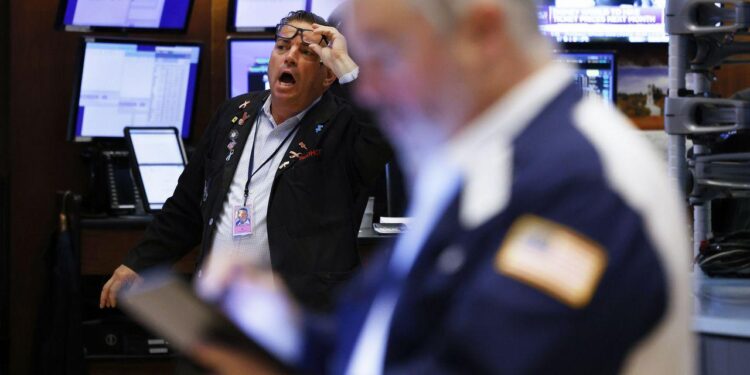The stock market is so over the Federal Reserve—but that doesn’t mean it’s out of the woods just yet. Attention is now turning to the U.S. economy—and whether it sinks into recession will determine if a retest of the lows is coming.
It wasn’t a great week for the stock market, but neither was it a bad one. The Dow Jones Industrial Average fell by just 0.01%, and the S&P 500 index dropped 0.7%. The Nasdaq Composite fell by a more substantial 1.6%.
That loss was especially disheartening coming just one week after the Nasdaq staged its biggest rally since March amid optimism about slowing inflation. Part of the drop was in reaction to stronger-than-expected retail-sales data in a classic “good news is bad news” response—but part was by design. A long list of Fed speakers shared their thoughts on future interest-rate hikes, and most pushed back against the idea of a pause, a pivot, or any letup in the fight against inflation.
Still, the market should be given credit for its resilience. When St. Louis Fed governor James Bullard said on Thursday that rates have “not yet reached a level that could be justified as sufficiently restrictive” and might need to rise as high as 7% to tame inflation, the S&P 500 initially dropped 1.3% but closed the day down just 0.3%. It was a sign, perhaps, that the Fed has lost the ability to shock anyone but the shortest of short-term traders.
“Despite the Fed’s hammering [that] it’s not done, for the most part, it seems to be falling on a market without ears,” writes Frank Gretz, market analyst at Wellington Shields.
That seems to be reflected under the surface, as well. For most of the year, rising real rates and expectations for rate hikes were responsible for driving stock prices lower, according to Quant Insight. Now, things have started to shift. While real rates are still moving the market, credit spreads—the difference between yields on corporate and government bonds that signal how worried the market is about defaults—have been the largest driver of stock prices since Oct. 12, per Quant Insight’s models. “While the market’s attention has been focused on the inverse relationship between equities and bond yields, we should start paying much more attention to credit spreads from here,” write the firm’s strategists.
The shift makes some sense. The Fed’s rapid rate hikes have inverted the yield curve, meaning that shorter-term Treasury yields are higher than longer-term yields, which has typically been a prelude to a recession. What’s more, the difference between the three-month and 10-year Treasuries widened to more than half a percentage point this past week. That has happened just six times since 1970, the last time in 2007, says Bespoke Investment Group. The economy entered recession five to 14 months later on those occasions.
The market doesn’t seem too worried about a recession just yet. The spread between Treasuries and junk bonds has fallen to 5.08 percentage points from a recent peak of 6.13 on Oct. 5. That’s all well and good, but Michael Darda, chief strategist at MKM Partners, notes that CCC-rated bonds, the “junkiest of the junk,” have remained weak, and that the market “could be foreshadowing more broad-based credit market weakness down the road.”
But not just yet. There’s a good chance that the stock market’s bounce could resume in the weeks ahead, at least until mid-December, when November’s consumer price index is released and the Fed will almost certainly raise rates again.
“The current market trend likely continues until mid-December, but then becomes a ‘coin toss,’ with increasing evidence of an impending recession,” writes Wells Fargo Securities equity strategist Chris Harvey.
Do you feel lucky?
Write to Ben Levisohn at [email protected]











